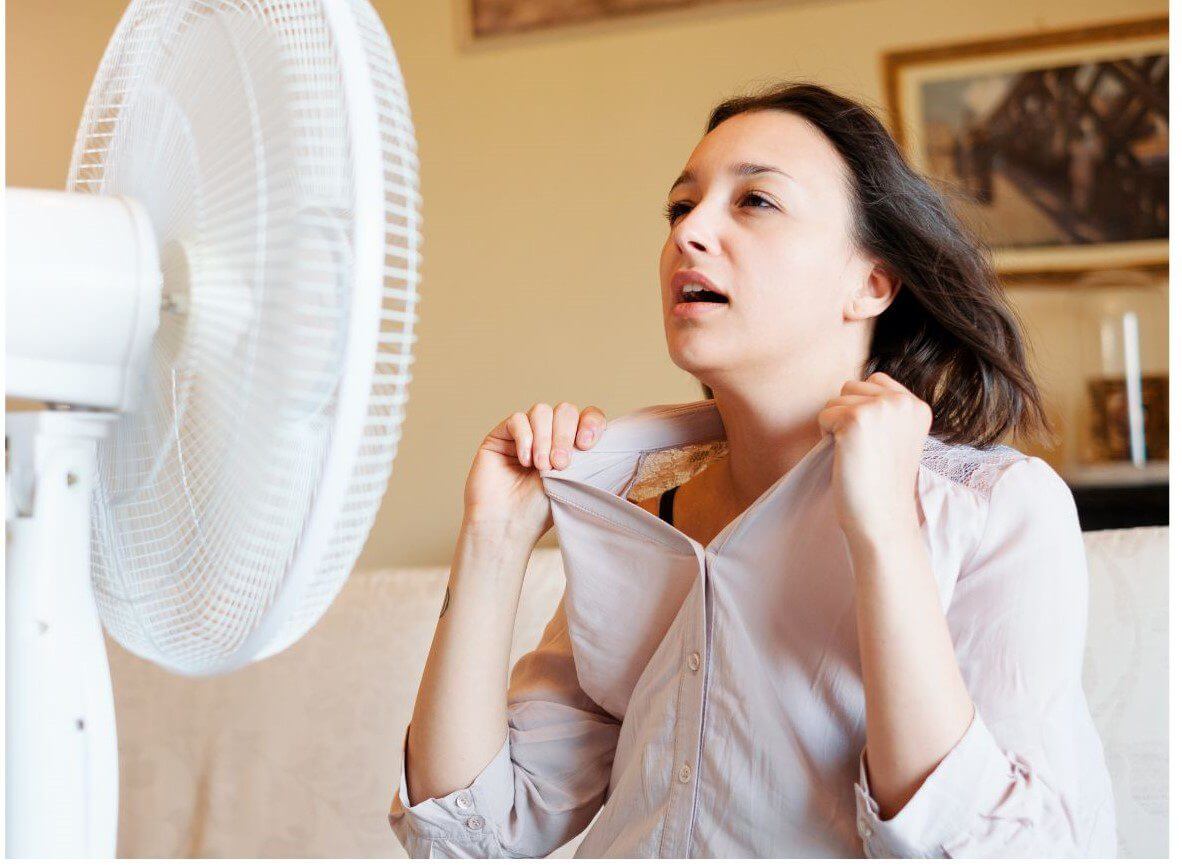Phytoestrogens: Good or Bad for Hormones?
Everyone wants balanced hormones, and this means it’s crucial to be aware of foods in your diet that could be contributing to hormone imbalance. In this case, we’re looking at phytoestrogens. These estrogen-like compounds are found in many plants and have been the subject of much debate in the health world. Some experts claim that phytoestrogens help menopause symptoms and even reduce the risk of breast cancer, while others say they disrupt hormonal function. So, what’s the truth? Are phytoestrogens good or bad for hormones?
Struggling with hormone balance and aren’t sure where to turn? Let me guide you! Learn more about the Superwoman Circle.
What are phytoestrogens?
Phytoestrogens are compounds found in many plants, particularly legumes and grains. They’re thought to mimic the effects of estrogen in the body and can bind to receptors that are normally activated by the body’s own estrogen hormones.
Learn more: 7 Hormones Every Woman Should Know—Read | Listen
The different types of phytoestrogens
There are two main types of phytoestrogens:
Isoflavones: These are found in soy products, such as tofu and soy milk.
Lignans: These are found in flaxseed, whole grains, beans, and many fruits and vegetables.
Other kinds of molecules (including plant steroids and terpenoids) have demonstrated varying estrogenic activity as well.
Do phytoestrogens increase estrogen levels?

Phytoestrogens can both increase estrogen levels (an estrogenic effect) and decrease estrogen levels (an antiestrogenic effect) (1).
Phytoestrogens function as very weak estrogen. Some research suggests phytoestrogens are only 1/1,000th to 1/10,000th of the potency of naturally circulating estrogen (2). As phytoestrogens bind to receptor sites normally taken up by stronger forms of estrogen, this generally means lower estrogen levels for many women. For women with very low estrogen, phytoestrogens may modestly shore up levels (3).
In men, phytoestrogens can influence testosterone levels to some degree, but the research is mixed. Some studies show that consuming higher amounts of isoflavones could lower sex-hormone binding globulin (SHBG) and free testosterone levels, but other studies show no effect on testosterone at all (3,4).
Read: Do You Have Estrogen Dominance?
Some phytoestrogens lower the “bad” type of estrogen
In women who are postmenopausal, soy isoflavones can block the binding of stronger, more potent estrogens, which may help prevent hormone-related cancers such as breast or cervical cancer, and prostate or testicular cancer in men (5).
Notably, Asian men and women have the lowest rates of breast and prostate cancers in the world, and studies suggest this may be related to soy isoflavones in their diets—50 mg/day, compared with 1-3 mg/day in Western diets (6)
Learn more: Balance Estrogen to Reduce Breast Cancer Risk
Phytoestrogens can have beneficial effects
A number of epidemiological studies have reported a connection between dietary intake of phytoestrogens and lower rates of certain cancers, cardiovascular problems, and menopausal symptoms (7).

Perimenopause & menopause
Some research suggests that consuming phytoestrogens can help women during perimenopause and menopause by alleviating some of the symptoms, such as hot flashes and night sweats (8,9).
Fertility
Some phytoestrogen may support healthy estrogen levels. However, excessive intake of phytoestrogens—especially from soy products—has been shown to negatively impact ovarian function and fertility (10).
Learn more: Top 5 Causes of Infertility—Explained
Estrogen dominance
Phytoestrogens may even protect the body against xenoestrogens (environmental hormone mimics) that are a leading cause of hormone imbalances like estrogen dominance. Phytoestrogens can bind to hormone receptor sites, preventing the xenoestrogen from doing so and blocking harmful activity.
Breast cancer prevention
Some forms of breast cancer may be worsened by excess estrogens in the diet, while other studies show phytoestrogens may actually reduce the risk of tumor growth.
In one study, phytoestrogens in Royal Jelly inhibited the BPA-induced growth of breast cancer cells. However, this same effect did not occur in the absence of BPA (11).
Foods That Contain Phytoestrogens

Phytoestrogen content varies in different foods with some foods having a stronger effect than others. Some soy products can have as much as 64 grams per serving, while lower sources of phytoestrogens—like cereal or dried fruits—may only contain 5 grams per serving (9).
- Soy and soy products (tofu, edamame, soy milk)
- Sesame seeds
- Flaxseeds
- Dried fruits, especially dates, prunes, and apricots
- Hummus and chickpeas
- Alfalfa Sprouts
- Black Beans
- Nuts (pistachios, walnuts, peanuts)
- Red Wine
- Garlic
- Multigrain Bread
Related: How to Seed Cycle for Hormone Balance
Potential health concerns with estrogenic foods
There is some evidence that consuming high amounts of phytoestrogens can lead to health concerns. For example, women in their reproductive years (who are not perimenopausal or postmenopausal) may experience reduced fertility or increased breast tenderness when consuming high amounts. Also, men may be at risk for altered hormone balance if eating a diet high in phytoestrogens.
Who should avoid phytoestrogens in food?
People who have a history of breast, uterine, or ovarian cancer may wish to avoid foods that are high in phytoestrogens. Additionally, those who take hormone replacement therapy should consult with their doctor. In general, it’s important to be mindful of the amount of phytoestrogens you consume.
Discussing your diet with a qualified healthcare provider is the best way to ensure that you’re making informed decisions about which foods to include or avoid in order to maintain healthy hormone levels.
What about soy?

Soybeans and soy products naturally contain some of the highest amounts of phytoestrogens. A diet heavy in processed soy (think soy ‘meats’, soy milk, soy formula) may affect the thyroid or harm fertility (12).
However, fermented and minimally processed soy, such as miso and natto have been consumed for thousands of years without negative health effects. Research suggests that soy consumed in this way (and in moderation) has a mostly neutral or slightly beneficial effect for overall health.
Many soy products sold in stores today are genetically modified and contain higher levels of estrogen-like compounds than they would traditionally. One study revealed that a type of soy isoflavone increases the growth of estrogen-dependent breast cancer cells (12). Other studies may not support these findings, but it’s best to be aware that very high doses of soy isoflavones or other phytoestrogens could aggravate certain types of breast cancer and/or fertility.
Read: Protein for Hormones—How Much Do You Really Need?
So, are phytoestrogens good or bad for hormones?
Although we still have a lot to learn about how phytoestrogens interact with hormones, the majority of whole foods containing phytoestrogens are safe to eat for most healthy people. If you’re noticing symptoms of imbalanced hormones, however, you should consider avoiding these foods. If you’ve had a hormone-sensitive breast cancer or take HRT, you should consume phytoestrogens with caution and consult a qualified nutrition professional.
If you’re consuming a lot of processed foods containing soy or other GMO products, you may be exposed to higher amounts of phytoestrogens than if you were consuming traditional products like tempeh or natto. The same goes for isoflavone supplements. When plant components are isolated and concentrated, their effects may be more pronounced.
The bottom line
Avoid large quantities of isolated phytoestrogen products, especially processed soy. If your diet is especially high in foods containing a lot of phytoestrogens, and you’re noticing signs of a hormonal imbalance, it’s a good idea to decrease your consumption. Also, if you’re a man experiencing symptoms of low testosterone, you may be sensitive to the effects of phytoestrogens and should also decrease your intake. But, if you’re a healthy person who enjoys many of these foods, they’re safe to consume in moderation.
Resources
- https://www.ncbi.nlm.nih.gov/pmc/articles/PMC3074428/
- https://www.pnas.org/doi/10.1073/pnas.102650199
- https://www.ncbi.nlm.nih.gov/pmc/articles/PMC7468963/
- https://www.sciencedirect.com/science/article/pii/S0890623820302926
- https://www.ncbi.nlm.nih.gov/pmc/articles/PMC4129534/
- https://www.ncbi.nlm.nih.gov/pmc/articles/PMC9259214/
- https://journals.sagepub.com/doi/10.1177/1534735403002002004
- https://pubmed.ncbi.nlm.nih.gov/20080366/
- https://www.ncbi.nlm.nih.gov/pmc/articles/PMC7397171/
- https://academic.oup.com/jn/article/140/12/2322S/4630735
- https://academic.oup.com/bbb/article/71/1/253/5940335
- https://rep.bioscientifica.com/view/journals/rep/143/3/247.xml
